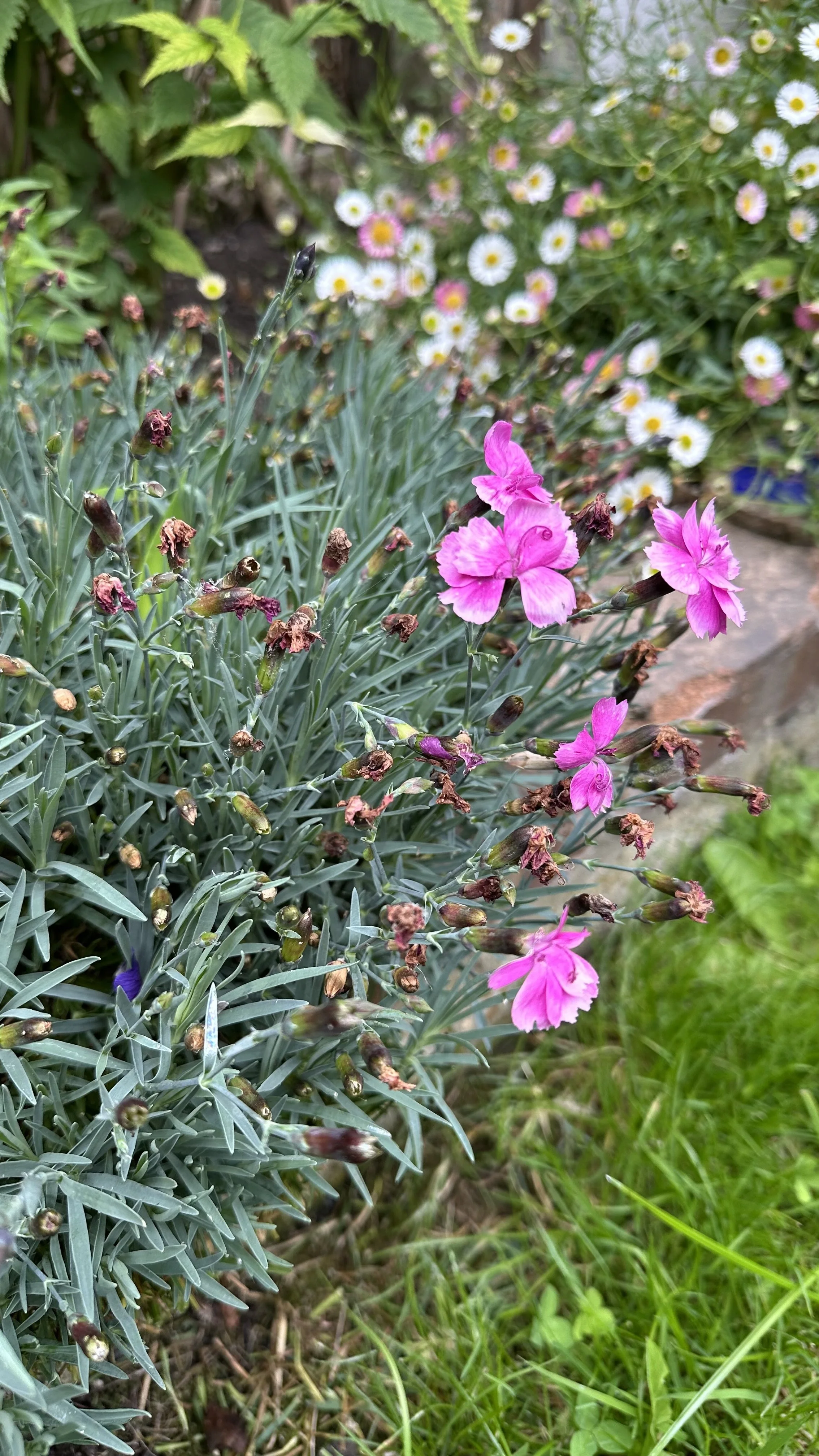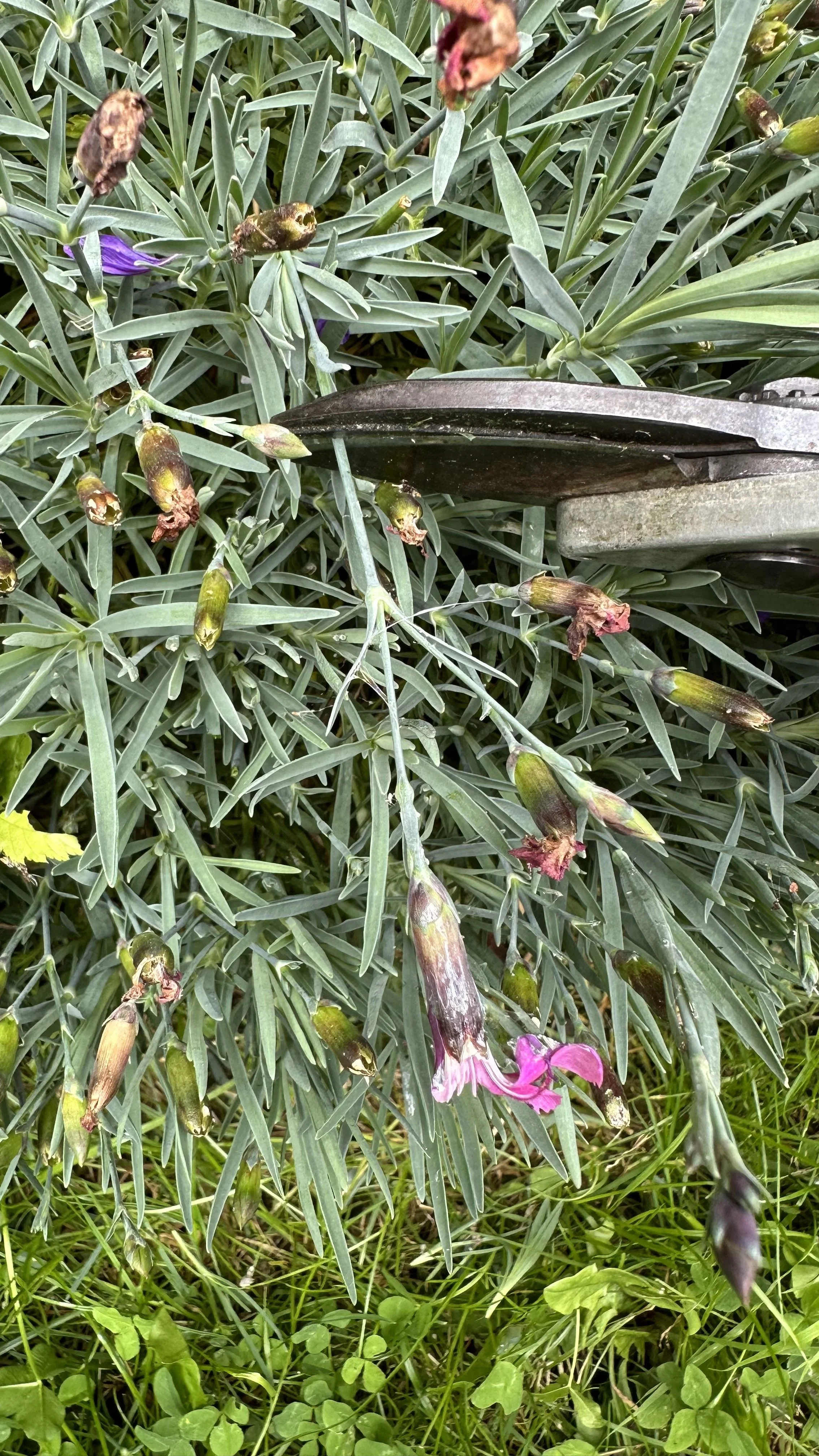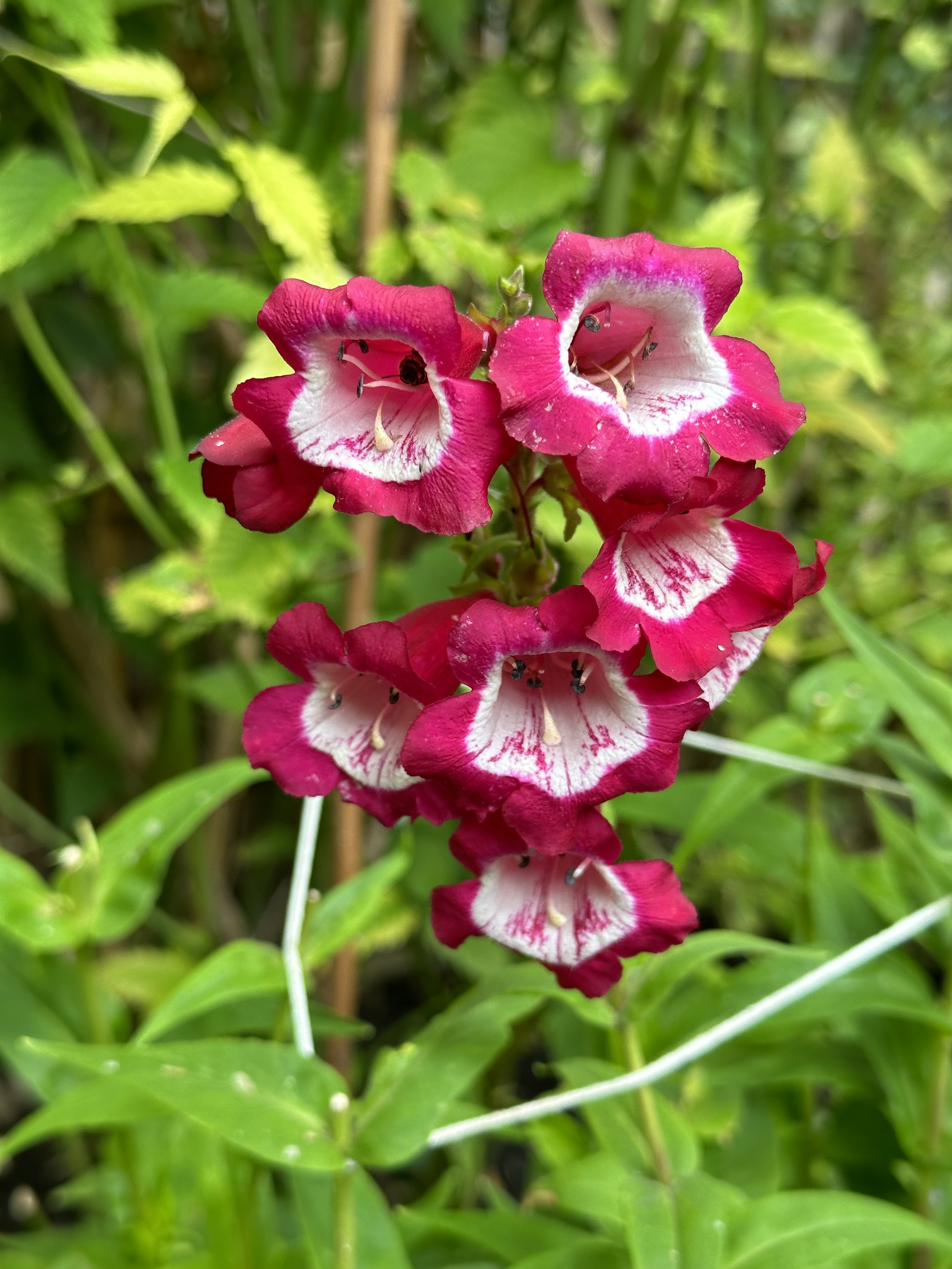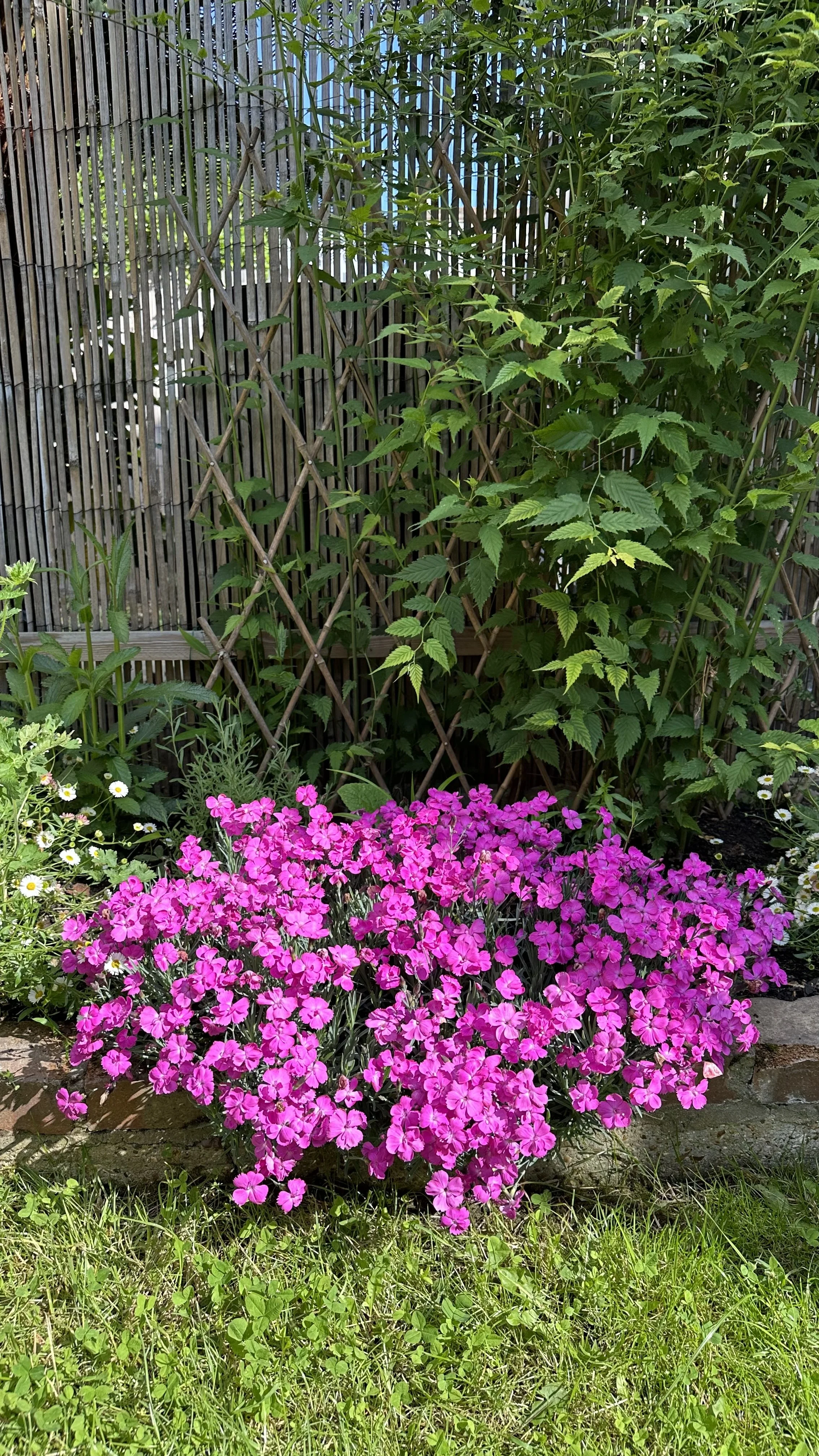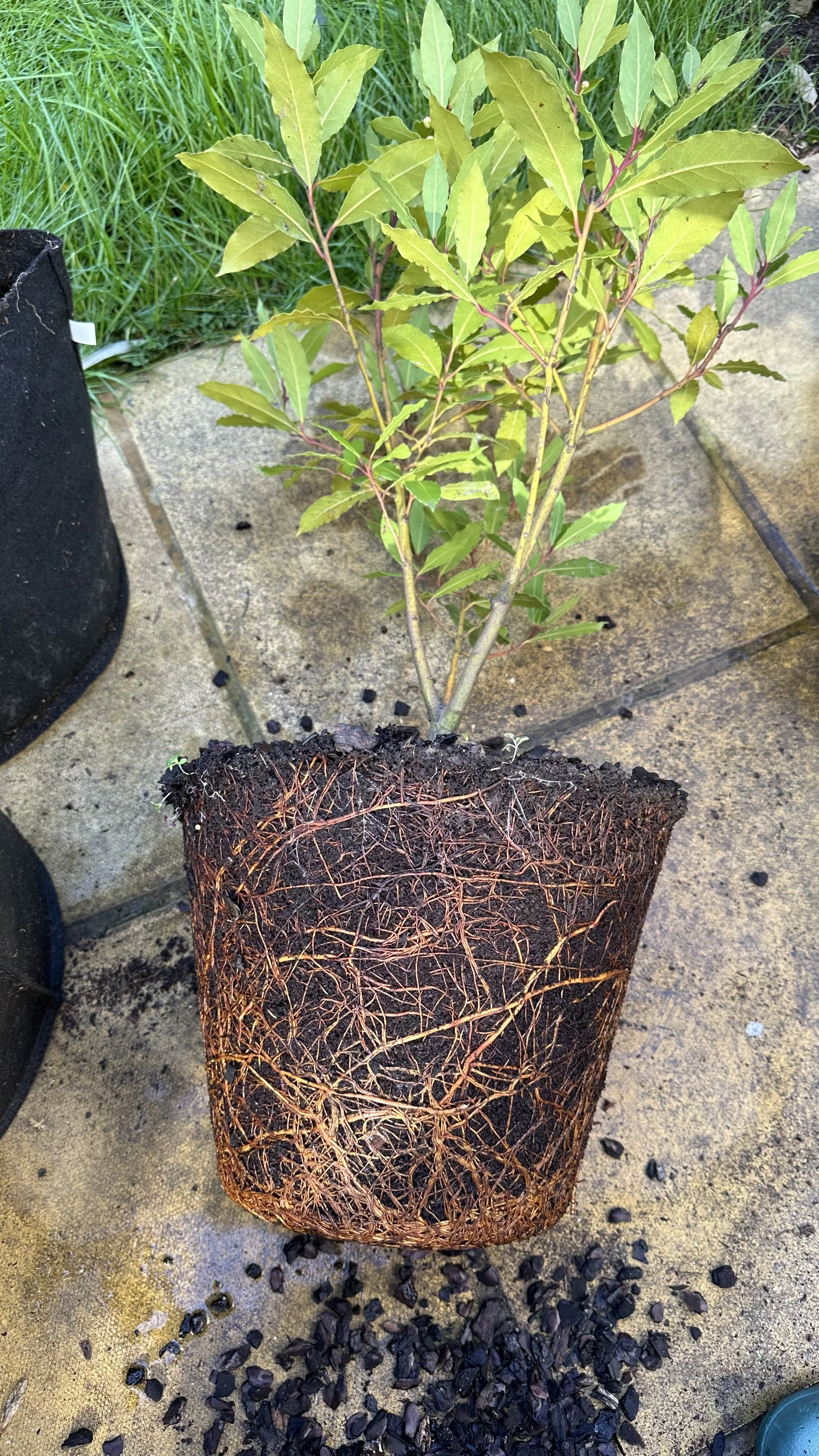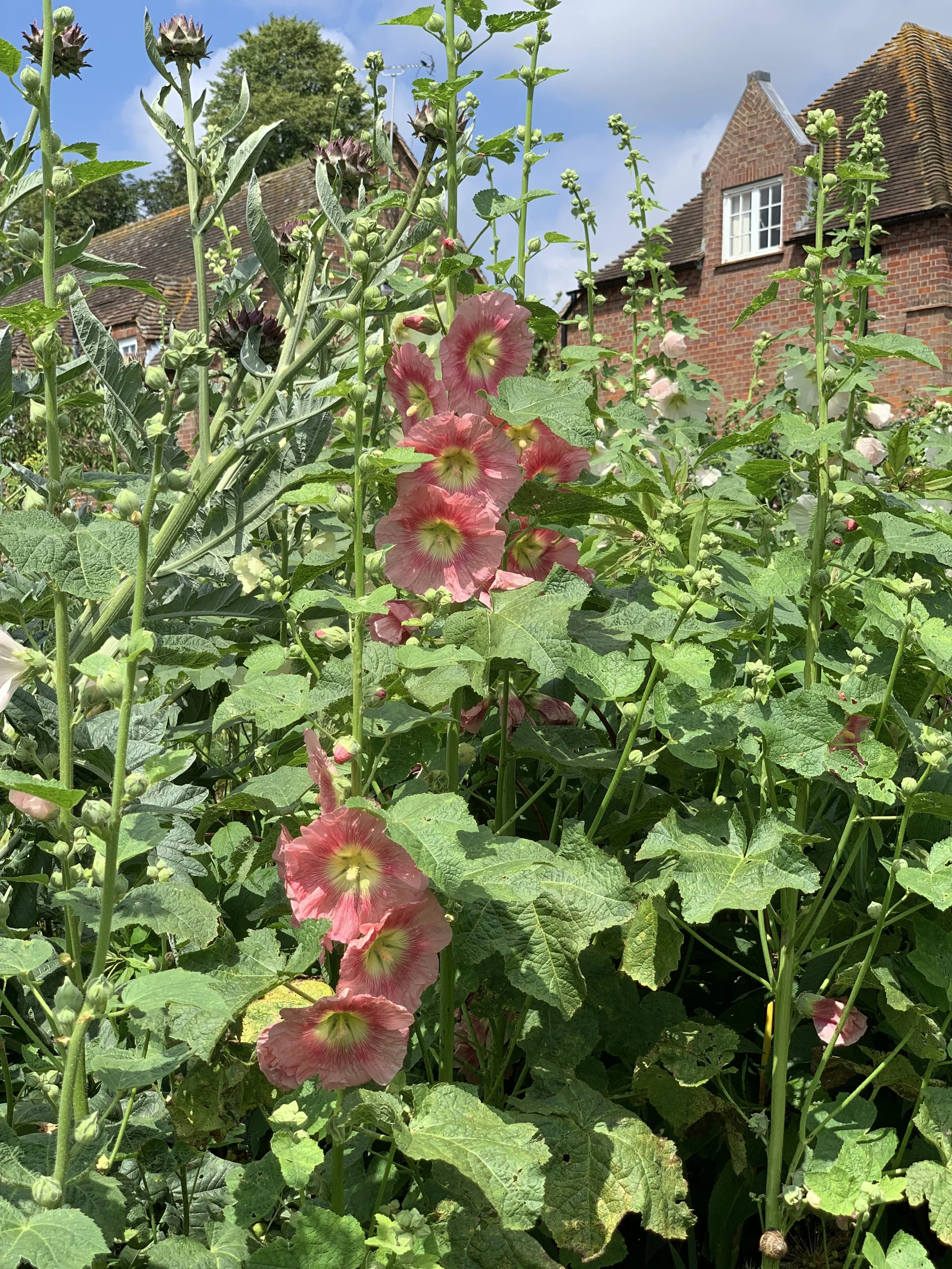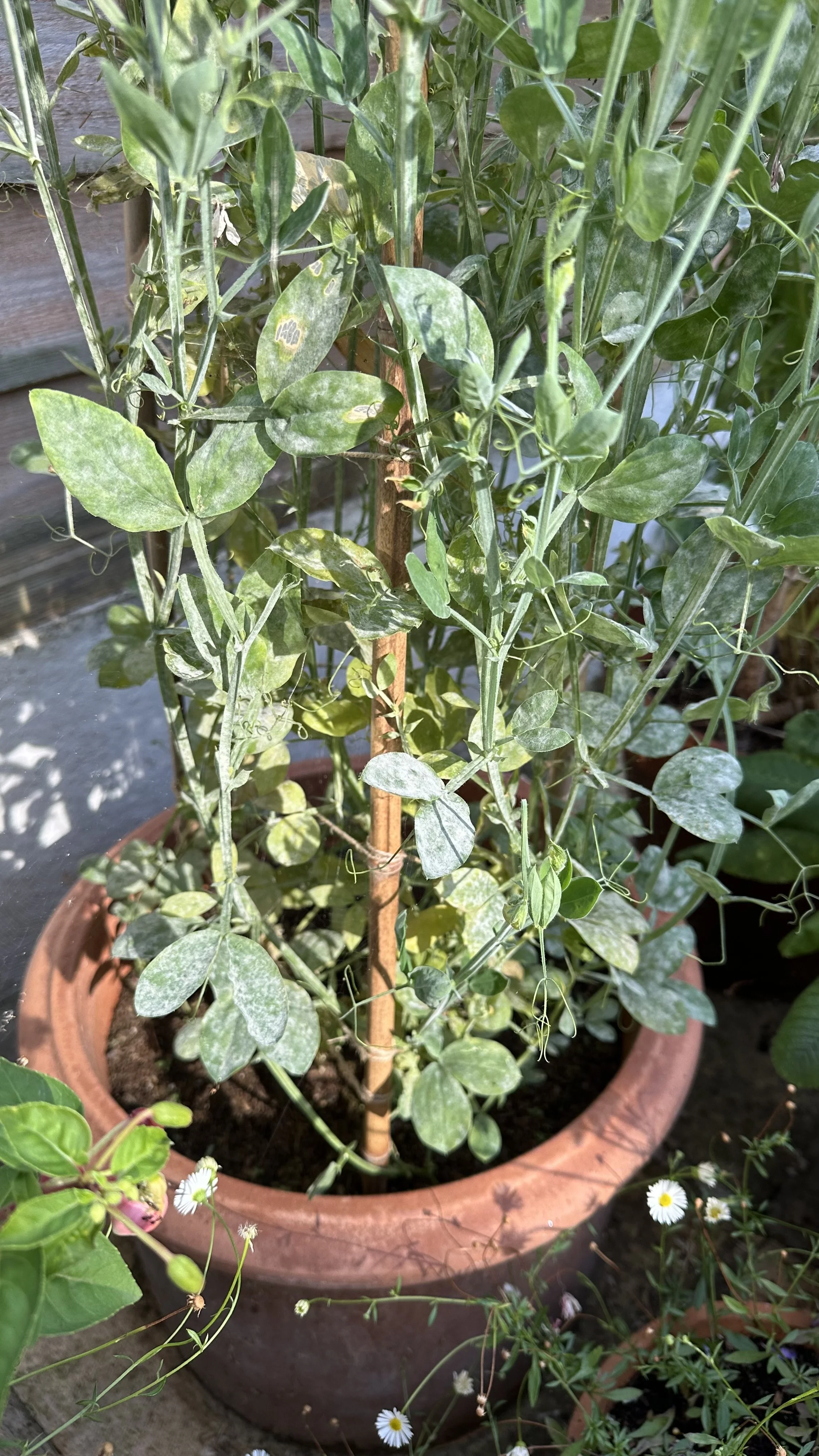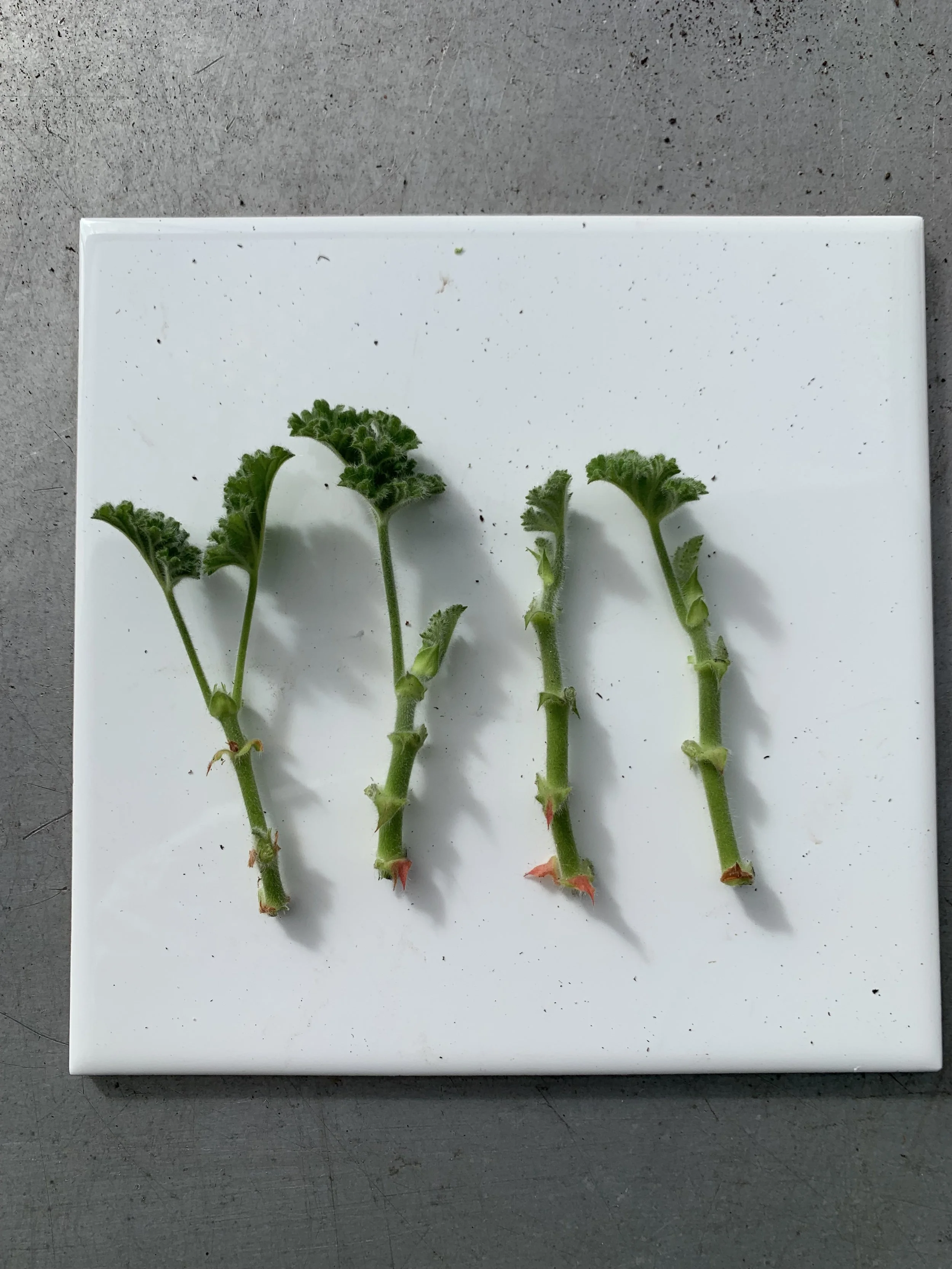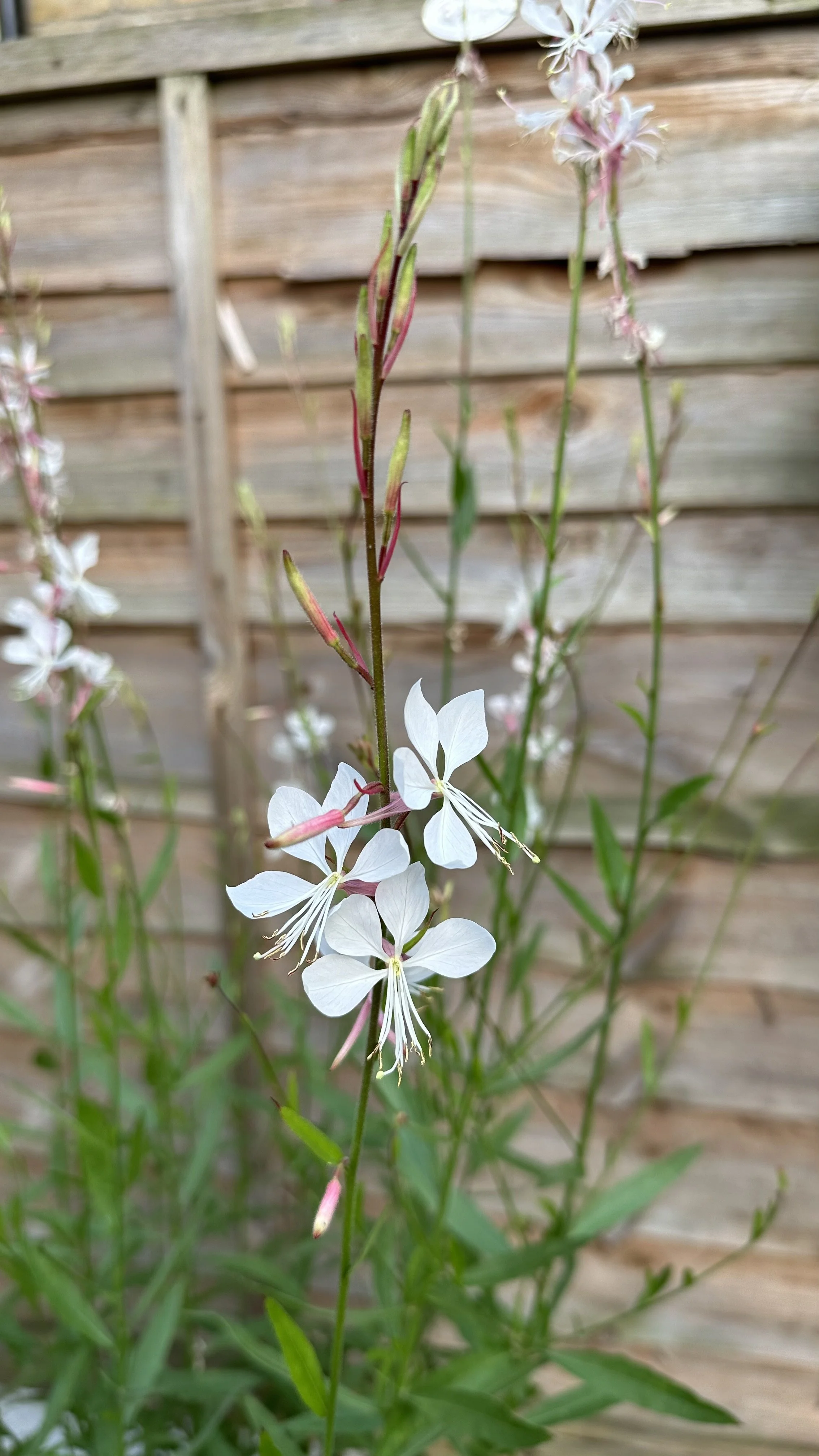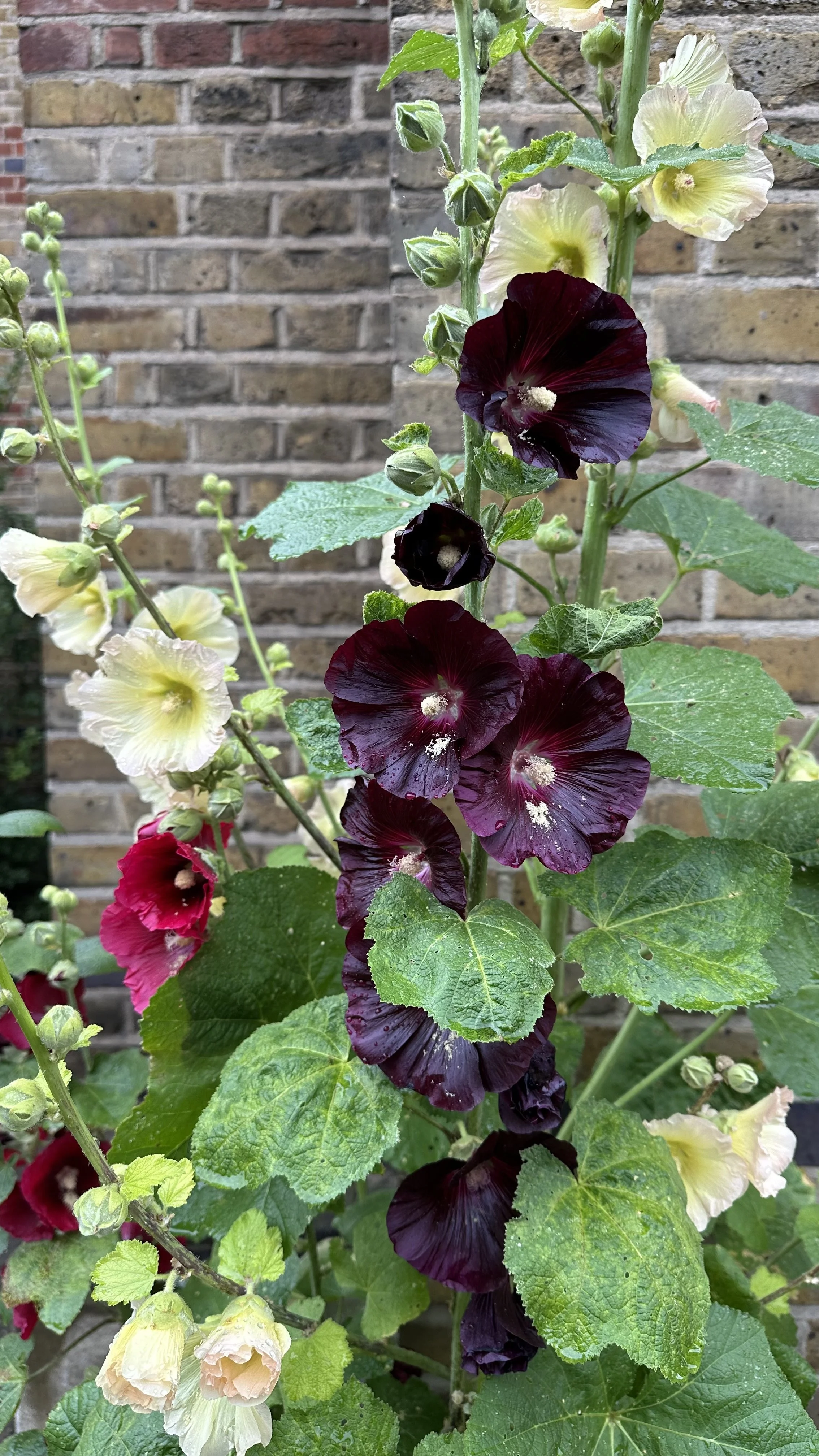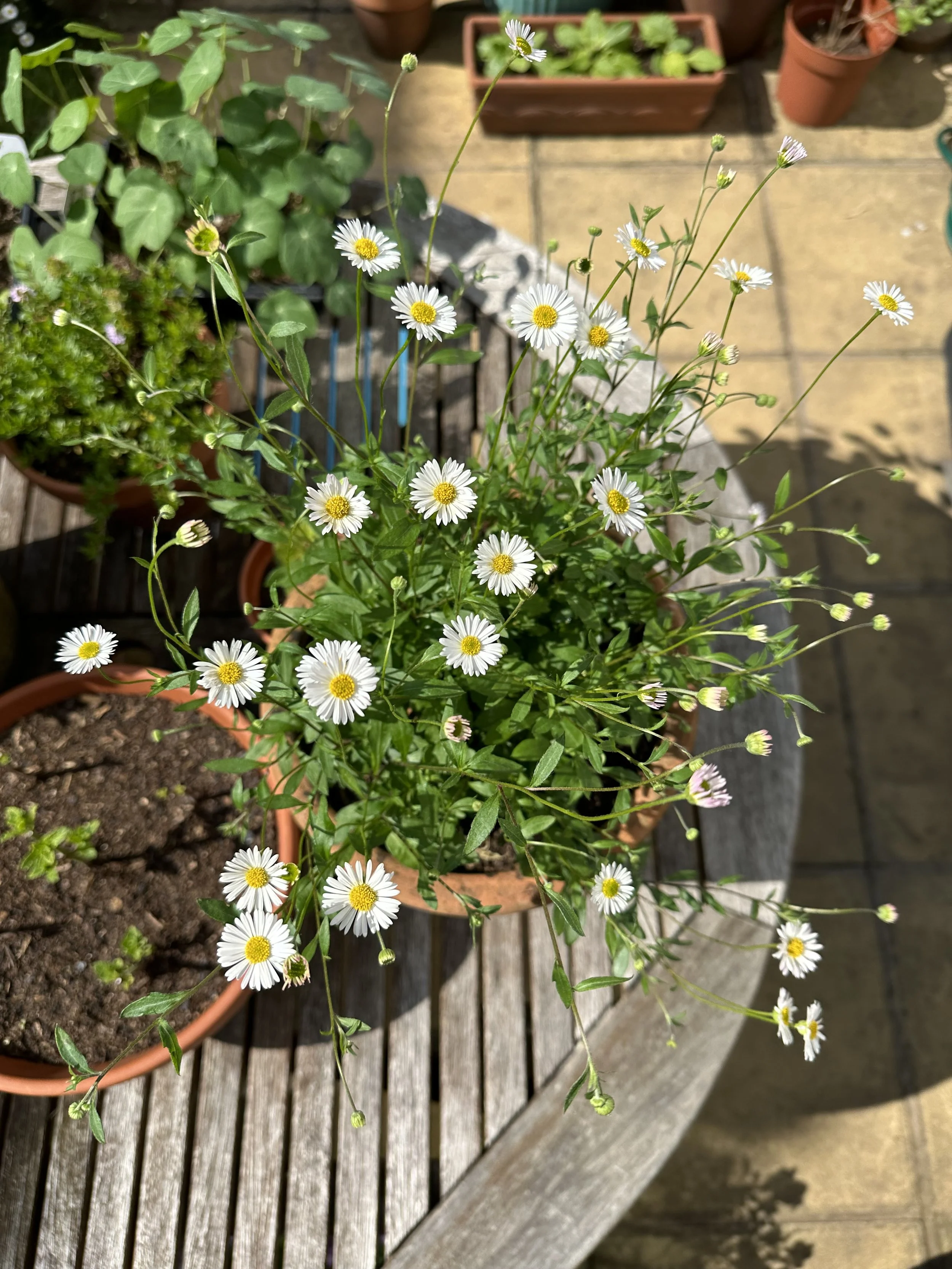Pruning Dianthus: Quick, Easy Snips for More Blooms
This website is reader-supported - thank you! This post may contain affiliate links. As an Amazon Associate, I earn from qualifying purchases at no extra cost to you.
Dianthus plants are the kind of flowers that reward a little effort.
They don’t ask for much—some sun, decent soil, and the occasional drink of water—but they do appreciate a trim now and then.
Without pruning dianthus regularly, they can get leggy and a little wild-looking, which isn’t necessarily a bad thing, but if you want steady blooms, a bit of maintenance goes a long way.
Whether you’re growing them in a garden border or keeping them in pots, a quick snip here and there keeps them fresh, full, and flowering for as long as possible.
For more pruning tips, check out my guides:
Lavender Pruning: A Simple Guide
When to Prune Dianthus
Pruning isn’t complicated, but timing matters.
Dianthus responds well to consistent trimming throughout the growing season, and knowing when to snip can make all the difference in keeping your plants full of blooms.
Well-timed pruning not only extends the flowering period but also keeps the plant healthy and compact.
Here’s the breakdown of when to prune for the best results:
Throughout the season:
Deadheading spent flowers keeps new ones coming.
Regularly removing spent blooms prevents the plant from wasting energy on seed production and encourages it to put out fresh buds instead.
This practice also reduces the risk of disease, as decaying flowers can harbor pests and fungi.
To learn more about deadheading, check out my guides:
Deadheading Daffodils: How to Ensure Next Year’s Blooms
Mid-summer:
A light trim after the first big bloom encourages a second round.
This means cutting back stems by a few inches to stimulate new growth and ensure a steady flow of flowers into the later months.
Trimming also prevents the plant from becoming too leggy, maintaining a fuller, more compact shape.
Fall:
Cutting them back keeps things tidy heading into winter.
Removing straggly, leggy growth not only makes the plant look better but also helps it store energy for the next season.
If you’re in a region with mild winters, dianthus may continue to produce some foliage, making a moderate trim more beneficial than a full cutback.
Winter:
Hands off—unless you’re just removing dead bits.
Most dianthus varieties don’t need a heavy winter cutback; instead, leave healthy foliage intact to protect the plant from harsh weather.
This foliage acts as insulation, shielding the plant’s crown from extreme cold and frost damage.
For more growing ideas, check out my guides:
The 5 Best Bedding Plants for Summer
Dianthus ready to be pruned.
Spent flowers that need to be pruned.
Where to snip dianthus.
How to Prune Dianthus (Without Overthinking It)
1. Deadhead Dianthus Flowers
If you want your dianthus to bloom all summer, deadheading is non-negotiable.
Snip off spent flowers just above a set of healthy leaves using sharp pruning shears or garden scissors. This ensures a clean cut that promotes healing and encourages new growth.
While you're at it, remove any yellowing leaves or dried-out stems to improve air circulation and prevent disease.
Less seed production = more energy for new blooms. When the plant isn't using energy to form seeds, it redirects that effort into producing fresh flowers.
These pruning shears are perfect for the job:
2. Cutting Back After Flowering
After the first big flush of flowers, a quick trim helps keep things neat and encourages more blooms.
Use sharp pruning shears to cut stems back by about a third. Cutting too much can stress the plant, so stick to a moderate trim.
Focus on long, leggy stems and any stragglers that are ruining the shape. This keeps the plant compact and prevents it from getting too top-heavy.
If you're growing dianthus in pots, this step is especially important for keeping them compact and preventing overcrowding, which can lead to fungal issues.
3. Fall Cleanup
If your dianthus is a perennial, it needs a little prep for winter.
Cut the plant back to a few inches above the soil.
This helps conserve energy for the next growing season and prevents disease from overwintering in dead plant material.
Remove dead or diseased leaves to reduce the risk of fungal infections or pests lingering through the colder months.
A light layer of mulch around the base adds extra protection in cold climates, especially for potted dianthus, which are more exposed to the elements.
This mulch is great for dianthus:
4. Winter Care (or Lack Thereof)
Dianthus in winter is pretty low maintenance.
If you’re in a cold climate, don’t cut them back too much—they need some protection.
The remaining foliage acts as insulation against harsh winter temperatures.
For potted dianthus, move them to a sheltered spot if temperatures dip too low. A garage or covered porch can offer protection from frost.
In mild climates, they might stay semi-evergreen, in which case, just let them do their thing. Lightly remove any dead or damaged foliage as needed.
For more tips and tricks, check out my guides:
Plants That Deter Cats: A Natural Solution to Keep Cats at Bay
Dianthus after pruning.
Keeping Dianthus Happy (With Minimal Effort)
Sharp pruning shears = clean cuts.
No jagged edges, no sad stems.
Dull blades can crush stems rather than cutting them cleanly, which can slow down healing and invite disease.
Keeping shears clean and sharp reduces the risk of spreading infections between cuts.
Water after pruning.
Helps the plant recover faster.
Pruning can cause some stress to the plant, and a deep watering session ensures it has enough moisture to bounce back quickly.
However, avoid overwatering, as soggy soil can lead to root rot.
For more watering tips, check out my guide: How to Use Watering Globes.
Good drainage is key.
Dianthus hates soggy soil.
Waterlogged roots lead to rot, so make sure your soil drains well, whether in the ground or a container.
If growing in a pot, choose one with drainage holes and use a well-aerated soil mix to prevent water from sitting at the roots.
Here is the soil mix I recommend:
Feed lightly post-prune.
Encourages fresh growth.
A diluted, balanced fertilizer can help your dianthus push out new foliage and more flowers after trimming.
Too much fertilizer, however, can lead to excessive leafy growth at the expense of blooms, so keep it light.
This is a great fertilizer:
Check for pests.
Aphids love dianthus, but a blast of water usually takes care of them.
Keep an eye on the undersides of leaves and around new growth, where pests like to gather.
If aphids persist, neem oil or insecticidal soap can help control infestations without harming beneficial insects.
A little upkeep keeps dianthus looking sharp and blooming longer.
A few minutes of pruning and care can make a noticeable difference, whether you’re growing them in a garden bed or scattered around in patio pots.
Taking care of the basics—proper pruning, watering, feeding, and pest control—will keep your dianthus thriving season after season.
For more growing tips, check out my guides:
Easy Flowers to Grow from Seed
FAQ
Do you cut back dianthus in winter?
Not really.
A light clean-up of dead leaves is fine, but heavy pruning should wait until spring.
If you trim too much in winter, the plant may struggle to regrow when temperatures warm up.
Instead, focus on removing any damaged or mushy leaves and let the plant rest until spring.
How do you prune dianthus in pots?
Same as in the garden—deadhead often, trim back when it gets leggy, and cut it down in fall if it’s a perennial.
Because potted plants tend to dry out faster, make sure they’re well-watered after pruning, and keep an eye out for any signs of stress, like wilting or yellowing leaves.
How do you keep dianthus blooming all summer?
Stay on top of deadheading, give it some water, and maybe a light fertilizer boost mid-season.
Removing spent flowers prevents the plant from focusing energy on seed production, and a balanced liquid fertilizer can provide extra nutrients to support continuous blooms.
Also, make sure your dianthus gets plenty of sunlight—at least six hours a day is ideal.
How do you care for dianthus in winter?
If it’s in a pot, move it somewhere sheltered to protect it from extreme cold.
If it’s in the ground, a little mulch goes a long way—just enough to insulate the roots without suffocating them.
In milder climates, dianthus may stay evergreen, in which case you only need to remove any dead or damaged foliage as needed.
Why isn’t my dianthus blooming?
Several factors can affect flowering.
Too much shade, too much water, or not enough deadheading are the most common culprits.
Dianthus thrives in full sun, so make sure it's getting enough light.
Overwatering can lead to root rot, which weakens the plant and reduces flowering.
Finally, if you haven’t been regularly deadheading spent blooms, the plant may not have the energy to keep producing new flowers.
Address these issues, and you should see an improvement.
Dianthus doesn’t ask for much, but a quick trim now and then makes a big difference.
Keep them pruned, and they’ll keep the flowers coming.
For more growing tips, check out my guides:
Top Slug Resistant Plants to Transform Your Garden
Wrap-Up
Pruning dianthus is an easy but important part of keeping these beautiful flowers in top shape.
Whether you’re growing them in a container garden or a flower bed, regular deadheading and seasonal trimming will help you get the most out of your plants.
With a little care, your dianthus—whether deep red, white, or classic pink—will reward you with plenty of blooms.
Gardening doesn’t have to be complicated, and when it comes to dianthus, a few simple pruning habits will keep your flowers thriving year after year.
Pin this post to save it for later!


